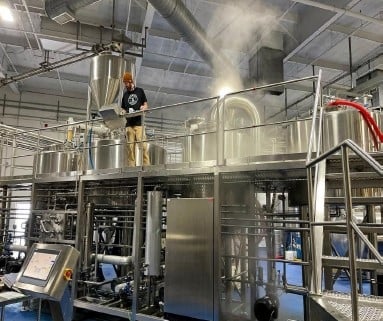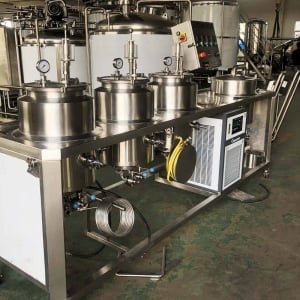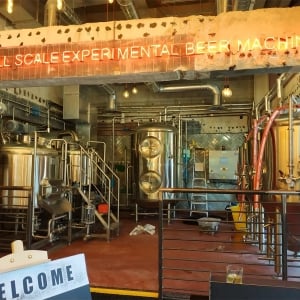Common Issues and Troubleshooting Tips for Nano Brewing Systems
Nano brewing systems have gained popularity in recent years for their compact size, relatively low cost, and ease of use. Despite these advantages, brewers may still experience some common issues during the brewing process. In this blog post, we will explore common issues faced by nano brewers, such as temperature fluctuations, contamination, and equipment failure, along with troubleshooting tips to help you overcome these challenges and brew better beer.
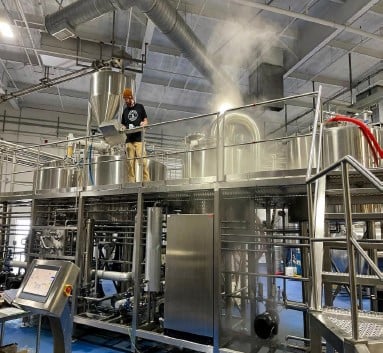
Nano Brewing Systems
Nano brewing systems are revolutionizing the craft beer scene, offering small-scale, high-quality brewing solutions for passionate homebrewers, startups, and microbreweries. With the rising demand for unique and locally crafted beers, nano brewing systems provide an efficient, cost-effective, and scalable way to brew delicious beers while maintaining complete creative control. Whether you’re looking to start a small brewery or experiment with new beer recipes, a nano brewing system could be your ideal solution.
In this detailed guide, we’ll explore everything you need to know about nano brewing systems—from equipment options to brewing processes, capacity layouts, customization, costs, and more. This article is designed to help you make an informed decision while giving you practical insights into the world of nano brewing.
Overview of Nano Brewing Systems
A nano brewing system is a small-scale brewing setup designed to produce limited batches of beer. Typically, these systems have a brewing capacity of 1 to 3 barrels (31 to 93 gallons) per batch, making them ideal for hobbyists, small businesses, or experimental brewers. Nano breweries fall under the category of microbreweries but operate on a much smaller scale.
These systems are perfect for:
- Craft beer enthusiasts looking to experiment.
- Entrepreneurs testing beer recipes before full-scale production.
- Pubs or restaurants that want to serve their house-made brews.
With a focus on flexibility, affordability, and quality, nano brewing systems offer brewers a unique opportunity to scale gradually without significant financial investments.
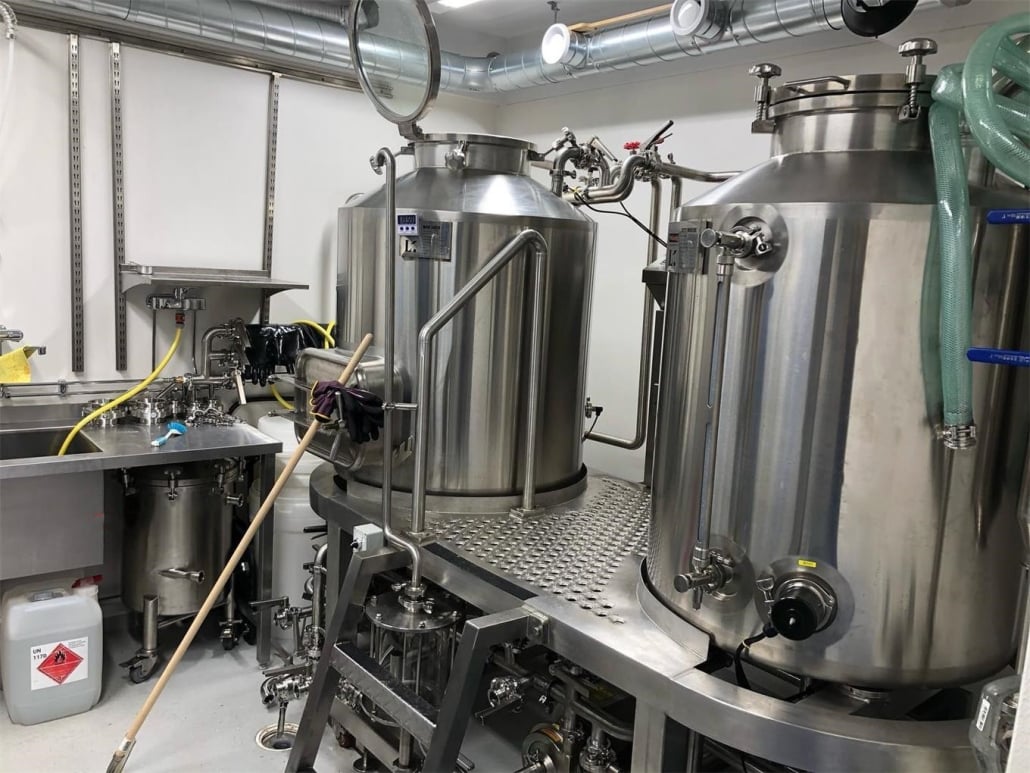
Guide to Nano Brewing Equipment
Understanding the key components of a nano brewing system is essential to setting up your brewery. Each piece of equipment plays a specific role in the brewing process, ensuring efficiency and consistency.
| Equipment | Purpose |
|---|---|
| Mash Tun | Vessel where grains are mixed with hot water to extract sugars (mashing process). |
| Lauter Tun | Separates the liquid wort from the grain solids after mashing. |
| Brew Kettle | Boils the wort while adding hops and other ingredients for flavor. |
| Fermentation Tanks | Tanks where the wort is fermented into beer with yeast. |
| Hot Liquor Tank (HLT) | Stores and heats water needed for mashing, lautering, and cleaning. |
| Wort Chiller | Rapidly cools the boiled wort to prepare it for fermentation. |
| Pumps and Piping | Circulate wort, water, and beer throughout the brewing system. |
| Kegs and Bottlers | Equipment for storing and distributing the finished beer. |
| Control Panel | Monitors and automates processes like temperature control and pump flow. |
| Cleaning Equipment | Essential tools like CIP (Clean-In-Place) systems to sanitize tanks, pipes, and other components. |
Nano Brewing Process Explained
Brewing beer with a nano brewing system involves several key steps. Although smaller than industrial brewing operations, the process remains similar in structure.
1. Mashing
The brewing process begins in the mash tun, where crushed grains (malt) are mixed with hot water to extract fermentable sugars. This mixture, known as “mash,” undergoes enzymatic activity to break down starches into sugars. The temperature and duration of mashing significantly influence the beer’s flavor profile.
2. Lautering
After mashing, the sugary liquid (wort) is separated from the grain husks in a process called lautering. The liquid is drained while water is sparged over the grain bed to extract as much sugar as possible. This step takes place in a separate vessel known as the lauter tun.
3. Boiling
The wort is then transferred to the brew kettle, where it is boiled for about 60-90 minutes. During boiling, hops are added at different stages to impart bitterness, flavor, and aroma to the beer. The boiling process also sterilizes the wort and evaporates undesirable compounds.
4. Cooling
Once boiling is complete, the hot wort must be cooled quickly to fermentation temperature. This is done using a wort chiller, such as a plate chiller or immersion chiller. Rapid cooling is essential to prevent contamination and improve beer clarity.
5. Fermentation
The cooled wort is transferred to fermentation tanks, where yeast is added. The yeast converts the sugars in the wort into alcohol and carbon dioxide, transforming it into beer. This process typically takes 1-3 weeks, depending on the beer style and fermentation conditions.
6. Packaging
After fermentation, the beer is conditioned, filtered, and transferred to kegs, bottles, or cans for packaging. Carbonation may be added during this stage, either naturally or forcefully.
7. Cleaning and Maintenance
Cleaning is critical in brewing to ensure the quality and safety of the beer. After every batch, all equipment, including tanks, pipes, and valves, must be thoroughly cleaned and sanitized using CIP systems.
Nano Brewing System Capacity, Design, and Customization
Choosing the right nano brewing system depends on factors like available space, production goals, and customization needs. Here’s a detailed breakdown:
| Parameter | Details |
|---|---|
| Capacity | Ranges from 1 barrel (31 gallons) to 3 barrels (93 gallons) per batch. |
| Space Requirements | Compact systems can fit in spaces as small as 300-500 sq. ft. Larger systems may need 1,000 sq. ft. or more. |
| Design and Layout | Systems can be configured in modular designs to fit small or irregular spaces. |
| Customization | Options for custom kettles, automation systems, control panels, and fermenters tailored to specific needs. |
| Scalability | Systems are scalable, allowing brewers to upgrade components or add additional tanks as production grows. |
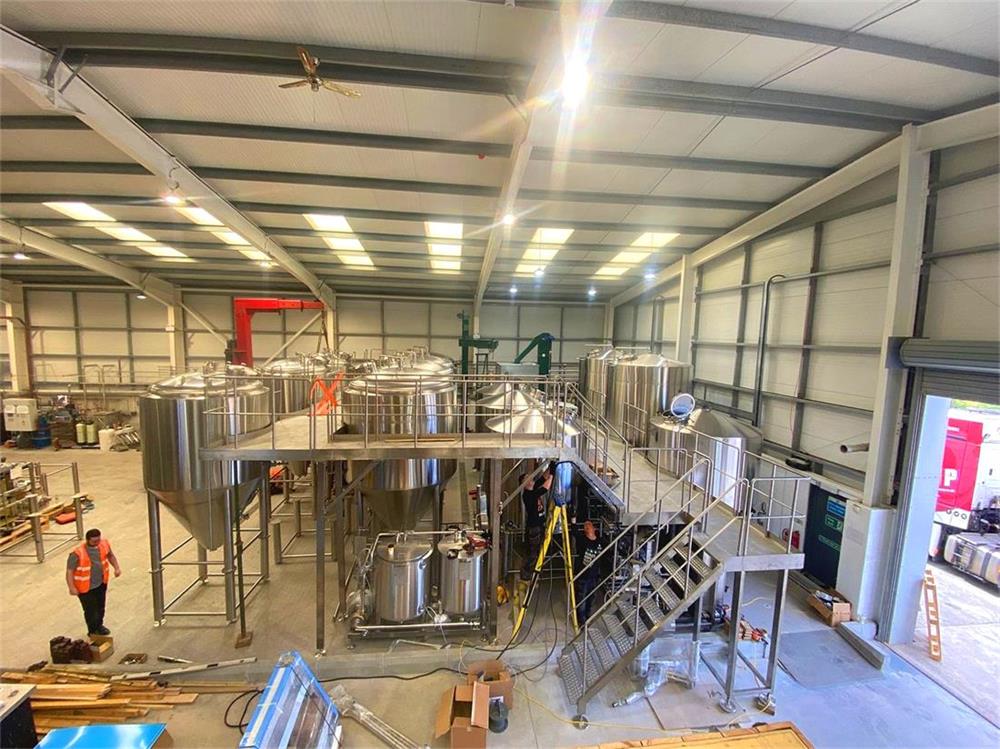
Nano Brewing System Suppliers and Price Range
When choosing a nano brewing system, selecting the right supplier is crucial. Here is a comparison of popular suppliers and price ranges:
| Supplier | Price Range | Features |
|---|---|---|
| Blichmann Engineering | $10,000 – $50,000 | Modular, highly customizable systems with advanced automation. |
| Ss Brewtech | $15,000 – $60,000 | Compact, stainless-steel systems ideal for small breweries and startups. |
| BrewMagic | $10,000 – $40,000 | User-friendly systems with intuitive controls for home and commercial use. |
| Stout Tanks | $20,000 – $70,000 | High-quality fermenters and brewhouses with scalability options. |
| Alpha Brewing Ops | $25,000 – $100,000 | Industrial-grade systems with full automation for professional brewing. |
How to Choose the Right Nano Brewing System Supplier
Choosing the perfect supplier requires considering various factors:
| Factor | What to Consider |
|---|---|
| Budget | Compare pricing, financing options, and long-term maintenance costs. |
| Quality | Look for durable, stainless-steel systems with solid warranties. |
| Customization | Ensure the supplier offers tailored solutions to fit your space and brewing needs. |
| Reputation | Research customer reviews, case studies, and testimonials for supplier credibility. |
| Support Services | Assess the availability of installation, training, and after-sales support. |
Pros and Cons of Nano Brewing Systems
| Advantages | Limitations |
|---|---|
| Affordable entry into professional brewing. | Limited production capacity for larger demand. |
| Ideal for experimentation and creativity. | Higher cost per batch compared to large systems. |
| Compact systems fit small spaces. | Requires significant manual labor for small batches. |
| Easy scalability as business grows. | May require upgrades as demand increases. |
Temperature Fluctuations
Consistent temperatures are crucial for quality beer; however, maintaining them can be challenging in nano brewing systems. Inconsistent temperatures may lead to off-flavors and suboptimal fermentation.
To begin with, consider investing in a reliable temperature controller. This device helps in monitoring and maintaining temperatures during the brewing process. Moreover, insulating your brewing area well minimizes temperature fluctuations caused by external factors.
Additionally, a heating pad or an immersion heater can be useful in keeping consistent temperatures during fermentation. By following these steps, you can enhance the quality and consistency of your nano brews.
Contamination
A significant challenge for all brewers, contamination poses a particular risk in nano brewing due to its smaller scale and increased human interaction. To ensure your brew remains free from contamination, adhering to the following tips is crucial.
First and foremost, cleanliness is key. Make sure to clean and sanitize all brewing equipment thoroughly before and after each use. By doing so, you minimize the risk of contamination.
Secondly, opt for a no-rinse sanitizer. This type of sanitizer not only simplifies the process but also reduces the chance of introducing contaminants.
Lastly, minimize your wort’s exposure to open air. During transfers and cooling, limit contact with the environment. If possible, use a closed fermentation system.
Troubleshooting Contamination
In the unfortunate event of contamination, taking prompt action can save your brew. Here are some steps to follow:
- Initially, identify the source of contamination. Inspect your equipment, brewing area, and ingredients for potential culprits.
- Next, discard any contaminated batches. Although disheartening, it’s essential to prevent further contamination.
- Finally, take preventive measures. Review and improve your sanitation practices and equipment maintenance to avoid future issues.
In conclusion, contamination is a critical issue in nano brewing. However, by following the above guidelines and troubleshooting tips, you can mitigate the risks and ensure a high-quality, contamination-free brew.

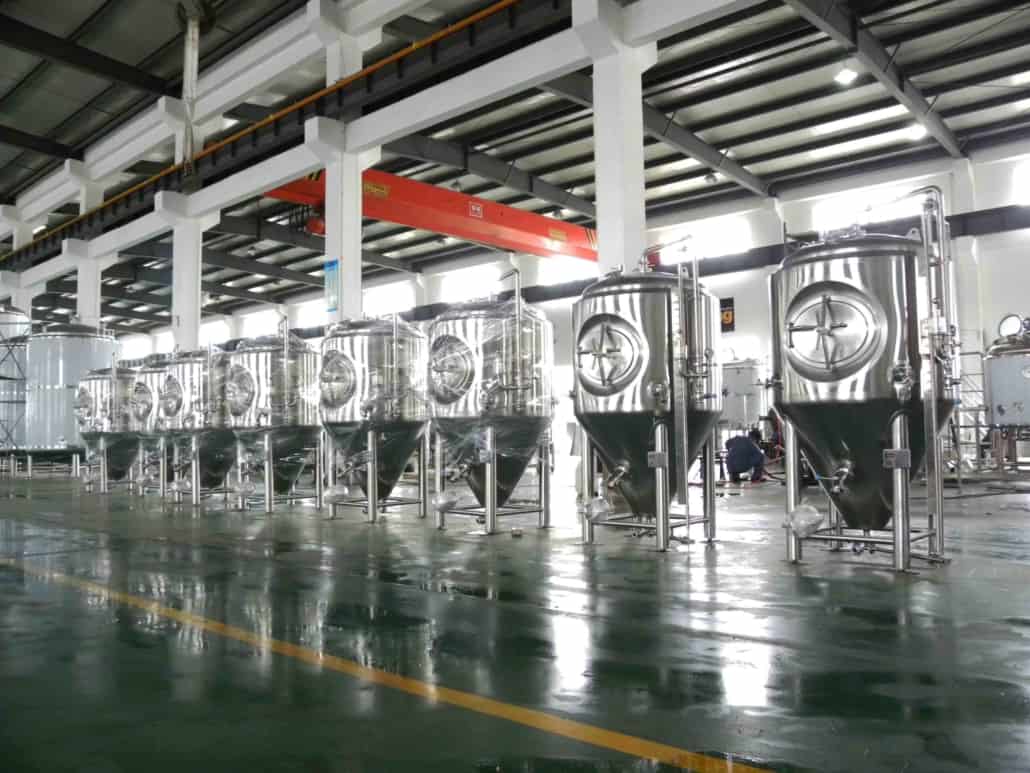
Equipment Failure
Equipment failure, a prevalent issue among nano brewers, often results from the smaller scale of these systems, making them more prone to wear and tear. Consequently, this can impact the overall brewing experience.
Addressing Equipment Failure
Firstly, make it a priority to inspect and maintain your brewing equipment routinely. This ensures all components remain in good working condition. Secondly, invest in high-quality, durable equipment specifically designed for nano brewing. This reduces the likelihood of breakdowns and enhances your brewing experience. Moreover, keeping spare parts on hand allows for quick repairs or replacements when needed.
Additionally, familiarize yourself with common maintenance procedures to tackle any issues that may arise. By following these steps, you can minimize equipment failure and enjoy a smoother brewing process.
Troubleshooting Tips
- Regular inspections: Consistently check your brewing equipment to detect potential issues early on.
- Quality equipment: Choose durable, high-quality equipment designed for the demands of nano brewing.
- Spare parts: Keep essential spare parts available for prompt repairs or replacements.
- Maintenance knowledge: Learn common maintenance procedures to address equipment issues efficiently.
In summary, addressing equipment failure in nano brewing systems requires regular inspection, investing in quality equipment, having spare parts on hand, and familiarizing yourself with maintenance procedures. By implementing these strategies, you can reduce equipment failure and enhance your nano brewing experience.
Inadequate Fermentation
Issue
Inadequate fermentation can negatively impact your final product. Off-flavors, poor attenuation, and other issues may arise. Various factors contribute to this issue, such as unhealthy yeast, low pitching rates, or incorrect fermentation temperatures.
Troubleshooting Tips
Firstly, ensure the use of a healthy, viable yeast strain. Also, adhere to proper pitching rates for your beer style. Controlling fermentation temperatures is crucial to create an optimal environment for your yeast. Moreover, proper aeration of your wort before pitching your yeast provides the necessary oxygen for healthy fermentation.
By following these tips, you can address inadequate fermentation and improve the quality of your nano brews.
Scaling Up Recipes
Challenges in Scaling Up Recipes
One challenge nano brewers face is accurately scaling up recipes while maintaining the desired taste and quality. Inadequate scaling can result in off-flavors or imbalanced beer.
Tips for Scaling Up Recipes
- Utilize brewing software and online calculators: To scale up recipes accurately, rely on brewing software or online calculators. They help adjust ingredients and brewing parameters, ensuring consistency in your beer.
- Maintain detailed records: Keep comprehensive notes on each brew, including measurements, temperatures, and adjustments. These records assist in refining recipes and identifying areas for improvement.
- Test small batches first: Before scaling up to a full nano brew, experiment with small test batches. This approach allows for fine-tuning recipes and minimizing risks associated with larger-scale brewing.
- Monitor equipment differences: Be aware that equipment used in nano brewing may differ from homebrewing setups. Adjust recipes accordingly to account for these differences and maintain the desired beer characteristics.
In summary, scaling up recipes for nano brewing systems requires attention to detail and careful adjustments. By utilizing brewing software, maintaining records, testing small batches, and monitoring equipment differences, you can successfully scale up your recipes and produce consistent, high-quality beer.

FAQs on Nano Brewing Systems
| Question | Answer |
|---|---|
| What is a nano brewing system? | A small-scale brewing system designed to produce 1-3 barrels per batch. |
| How much does a nano brewing system cost? | Prices range between $10,000 and $100,000, depending on size, features, and customization. |
| Can I scale up a nano brewing system? | Yes, many systems are modular, allowing brewers to add tanks and upgrade components. |
| How much space is required for nano brewing? | Compact setups can fit in 300-500 sq. ft., but more space may be needed for larger systems. |
| What types of beers can I brew? | You can brew any beer style, including IPAs, stouts, lagers, and experimental recipes. |
Conclusion
Nano brewing systems offer an excellent opportunity for brewers to create small-batch, high-quality beer. By being aware of common issues and following the troubleshooting tips provided in this blog post, you can overcome these challenges and improve the quality and consistency of your nano brews. Keep learning, experimenting, and refining your process to create the best beer possible. Cheers!
Thank you for reading this blog about nano brewing system. If you’re looking for a high-quality, durable, and easy-to-use nano brewing system, we recommend the brewing equipment brand Yolong Brewtech. Yolong brewing equipment has a good reputation in the market, and their products’ quality and reliability have stood the test of time. To learn more, visit our product page and browse our brewing system products.

